After 12 long months, education is starting to re-open, teachers are finding their way back into the classroom, and students are re-experiencing in-person classes again. From a technology perspective, schools have made more headway in the last 12 months than in the last 12 years. From a pedagogical point of view, we have some serious questions to ask and some decisions to make.
During these same crazy times, we have seen tremendous growth in the professional up-skilling and digital transformation fields. Mid-career people across the planet realizing that there are powerful tools available on-line to help them break out of their current role and build a path to that next job. Companies like Udacity have seen tremendous growth.
Over the next couple of months, I am going to lead you through some must-have conversations starting with this post looking at the current landscape by diving into 2 of the major types of learning that people are experiencing:
We’ll also look at some best practices in both arenas.
How am I defining asynchronous and synchronous learning? For the purposes of this post, I am defining synchronous as regular face-to-face learning where the teacher and student are interacting in real-time in the same space. While there are some variations of asynchronous learning, for the purposes of this post, I will define it as the course/course content is already created and available and students are working through that content with no human instructor.
This post is not necessarily simply about differences between online and in-person.
My background
I have worked in education for most of my life. That includes 20+ years teaching in the in-person (synchronous) Computer Science classroom where the pedagogy was 100% student-centered / project-based learning. Students learned skills through the actual doing of the projects themselves. In my current role with Udacity, I help build courses for the asynchronous environment. Asynchronous learning can happen both in schools or in professional learning.
Let’s take an in-depth look at both.
In-Person synchronous
Let’s start with the environment that is more familiar because it reflects learning for many people.
The classroom atmosphere and feedback
One of the most immediately clear benefits is the various types of direct and indirect reactions and feedback you get from being in front of the people you are teaching. This comes from various places including sensing the atmosphere in the classroom, expressions on student faces, hearing off-the-cuff student comments, overhearing peer-to-peer feedback, walking around seeing where students are getting “stuck” and also what they seem to be mastering, listening to the kinds of questions you get, and noticing when a concept or skill needs an extra example or an alternative explanation.
From the teacher perspective: Questions
The types of questions students ask during class are incredibly valuable to the perceptive teacher. The language of their questions gives you a clue as to how they are interpreting the content. As the lesson goes along, students can ask clarifying questions. Additionally, you can actually ask students what they think. “Does this make sense?” “Can you explain this back to me in your own words?” As a teacher, you can make changes and tweak on-the-fly, even class-to-class. After class , students can come by and ask for help, where you get to re-explain, re-demonstrate, or partner them with other students. Better teachers learn to answer questions with more questions to get students thinking for themselves; this is a vital element of that student-centered environment. From the emotional side, an intangible reward of teaching is seeing the “aha” and “YES!!!” moments. Sure they happen asynchronously, but we do not get to enjoy that with the student. Perceptive teachers will pay attention to what helped get the student to that point–and that then incorporate that going forward.
In face-to-face environments, the flexible teacher can adjust the types of presentation(abstract, concrete, visual, multimedia, interactive, etc) based on immediate feedback. Responding to a specific question or class need, the instructor can create resources on the fly that enhance the learning experience. Impromptu discussions and elaborations are gold in person because they happen in the moment; the effective teacher uses current events that pop up in the news.
From the student point of view, students get responses to questions in real-time when they need it. Students can help each other by asking and answering questions from peer students. There is an art to managing a class of multiple abilities and intelligences; one of the techniques is allowing opportunities for all students to get recognition and have some wins, both privately and publicly. Teachers develop skills in handling the typical day full of student mood swings, bad days, and stressful times.
All that is possible when you are in front of the students in a synchronous environment.
Asynchronous Learning
Learning online has gone from a couple MMOCs to an entire education ecosystem. This has the capability of serving students in dramatically different ways. There are no borders or limits to who can access. Students can learn 24/7/365. Students can work and learn at their own pace and are not tethered by the pace of slower or faster fellow-learners. This environment allows students to rewatch lessons as oftern as they like. Students are truly in control of their own learning.
For the instructor, it involves a very different approach than in-person. Every element of the learning experience has to be prepared in advance. Not only do you have to anticipate the communication of knowledge and learning content, but also anticipate the students themselves. Students in this environment may be from anywhere in the world and thus incredibly diverse. You do not have the luxury of tweaking, adding, and making changes once the course is released.
Importance of questions
You have to anticipate the questions in advance. Where do students typically get blocked or struggle? That struggle is not necessarily bad, in fact it might even be vital to learning, but you have to plan for it….so when students encounter that point in the learning, the struggle does not become a blocker. If you were in-person, what guiding questions would you ask the struggling student? How can you do that in advance? Let those questions be part of the original content delivery. Ask the questions aloud as you introduce the topic in your videos or in your supporting resources.
Curriculum is not as dynamic…once it is posted live, it is “up there”. You have to anticipate that you only get to explain/present/show once, so you have to convey your ideas in the way that most students will get it. You even need to think about the kinds of examples a struggling student needs and what kind of example the more advanced student needs. You might have some examples from the perspective of ability or progress, instead of content “if you are here” or “if you were able to figure this out” or “still struggling with this?”
For the student, there is minimal or no collaboration with peers, little chance to bounce ideas off peers, or no opportunity to ask on-the-fly clarifying questions to peers or instructors. How can students manage successfully in this space? Lots of resources, effective FAQ, opportunities to test their understanding throughout in small or big ways, and provide guided and unguided hands-on experiences.
Wandering eyes
In some places, local learning means there may not be a wide diversity in the class. The teachers knows the students in the school well in advance. Asynchronously, you cannot anticipate the diversity of the classroom, so in your content, you have to have make sure you use names, images, and stories that relate to a wide variety of people, trying hard to be inclusive but trying equally hard NOT to be exclusive. In a face-to-face classroom experience, students’ eyes are wandering around the room noticing what is on the walls, windows, and on the white board. How can you tap into this natural tendency asynchronously? Make sure the stories and examples in your prepared content delivery already represents types of people from different gender, ethnicity, culture, life style, and personality. And is what students are hearing, seeing, and experiencing representing people who are like themselves?
We often hear that the best teachers meet the students where they are at. That is much easier done if the student is in front of you, but this can still be true asynchronously as well. There need to be lots of resources for students to use to be able to answer their questions. Recognizing that learning differences exist in advance, allows you to to address the various learning needs for students of all levels of skill. What the weaker student needs is far different than the go getter. Provide resources for each of these levels of student.
From the student perspective
A huge benefit of asynchronous learning is that students can skip ahead, skip over, go back, and go forward; the learning need not be sequential.
This is vital to understand.
Students do not get answers to their questions in real time. So how do we keep smaller questions from becoming learning blockers which cause frustration? Students have to be comfortable moving-on and coming-back. That there may not be as many options for peer-to-peer collaboration is one of the elements that bothers me the most because–experienced teachers know peer-to-peer learning is powerful and can be where some of the best learning happens. How can this be represented asynchronously? Student forums and discussion boards are one attempt, but these are only useful if many students value this. In my time at Georgia Tech in their OMSCS, I learned quickly that these forums were where I could find other students at the same points in the learning as I was. They were asking the same questions, which means the answers and responses we were getting were what we needed at that time. In some of the classes, professors encouraged students to use the student discussion boards, provided rewards, or even let it be a requirement. There is no perfect solution there, but the attempt is important. Other options are required student peer-to-peer feedback. Have student review other student work and give positive and critical feedback. This is valued by students in the classroom and will be valued by students asynchronously as well if done right. I am referring both to receiving and giving feedback; ideally students are getting some feedback if possible, but the act of giving it is equally valuable. Consider an assignment where students critique previously submitted student work.
Take advantage of thoughtful rubrics, students can self-grade their work before submissions and keep their learning focused and on track. The rubric is going to be the exact instrument by which student work is evaluated. These can help guide students on what really are the important elements of the assignment, allowing them to focus effort and time where the instructor intended.
From the teacher perspective
In any subject area and in any class, one of the key elements is connecting the course to the world around them. When those moments pop up in real time, effective teachers take huge advantage of it. Asynchronously, there are no impromptu elaborations or discussions. You have to anticipate these in advance and include them as part of the content. Create assignments where students reflect on a world event related to the topic. There is tremendous value in students thinking about and articulating these thoughts. Don’t forget to updated every year to keep current.
Don’t get caught up thinking that the only way something can be learned is by you telling them. Even in asynchronous learning, there can be discovery learning, where students, through the interaction with the content and assignments…actually learn. In fact, self-derived learning is as valuable as learning what they are shown.
It is significantly hard to include humor and personality into a class, but you can and should. Include a funny story or joke, but know that your students are from different backgrounds, education levels, age, cultures, religions, and country. You don’t have the ability to explain or prepare, so consider jokes whose focal point is the topic itself, not the people interacting with the topic.
The connection that develops between a student and instructor is an important one, regardless of how the course is taught. That you care about the student and their learning, that you are passionate about the topic, that you appreciate others wanting to learn more, and that you have put a tremendous amount of thought into the course—-all of that has to be clear to the student and represented throughout the course. The best courses will have students loving the course, connecting the instructor, feeling challenged but supported, and learning a lot.
One powerful tool used in the classroom is using actual student-examples in your teaching. You cannot do that asynchronously as you would in person, but you can show sample examples of student work with common mistakes and use that as a spring board as part of the original content and learning itself, instead of as it as an add-on or an extra help option. This also make the content real and relatable to students.
Conclusion
As with most solutions, it is not one or the other, but instead a blend of the best of both. What are the elements of in-person learning that are vital? How can those be represented online? And vice versa, what are some vital elements of asynchronous and how can they be represented in-person. Having designed curriculum for both environments, I believe creating curriculum for the asynchronous environment is the bigger challenge to do well, simply because there is not the chance to make real-time changes. So, be clear what the tool is, and why you are doing it, so students will recognize what you are attempting to do, and they will appreciate the effort as they engage with the content.
If something I said makes sense to you or you want to follow up any of the ideas presented here please connect with me.




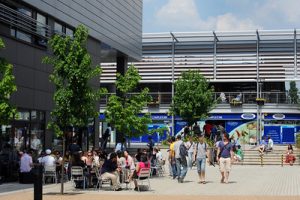


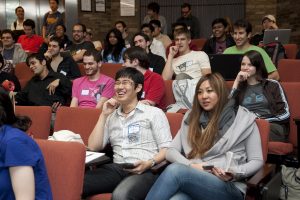

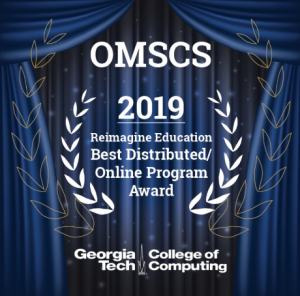

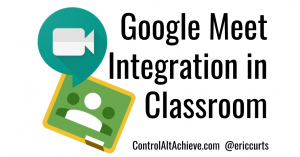
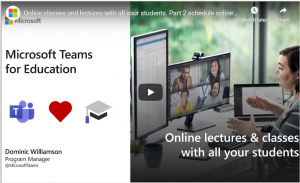
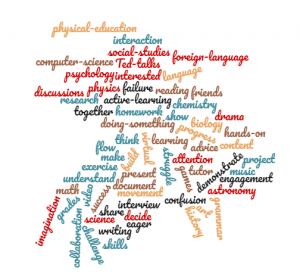
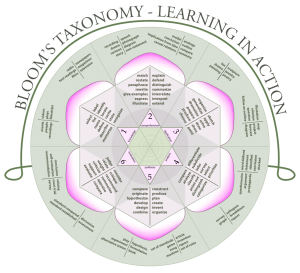


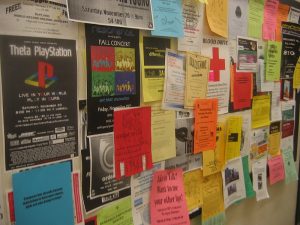

 But, we don’t have to be afraid of the amazing technologies that are changing the world around us.
But, we don’t have to be afraid of the amazing technologies that are changing the world around us. 
